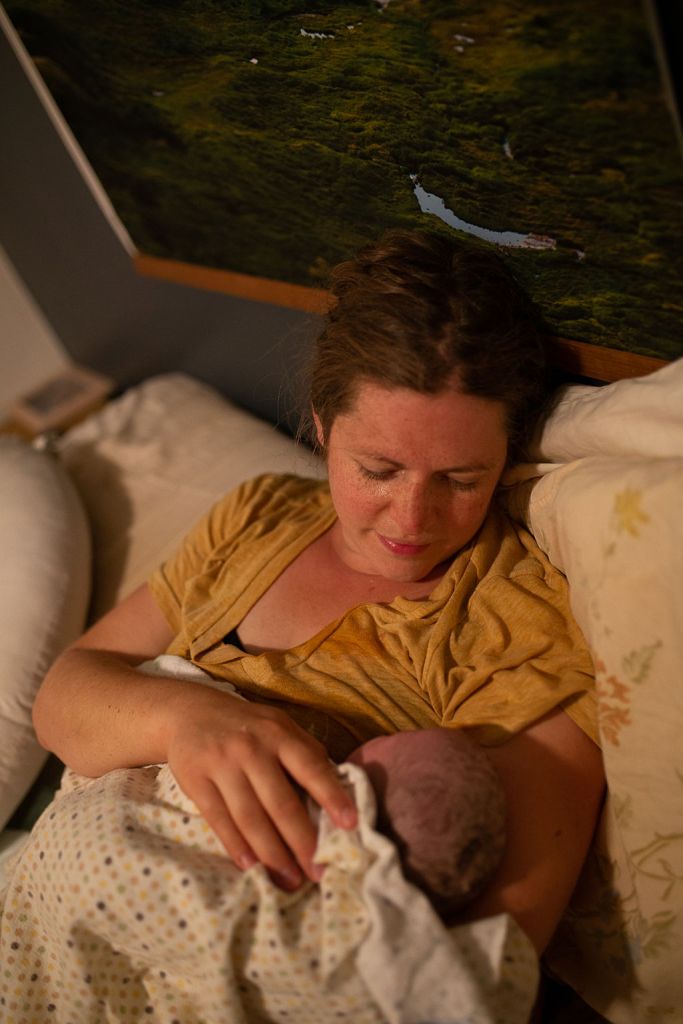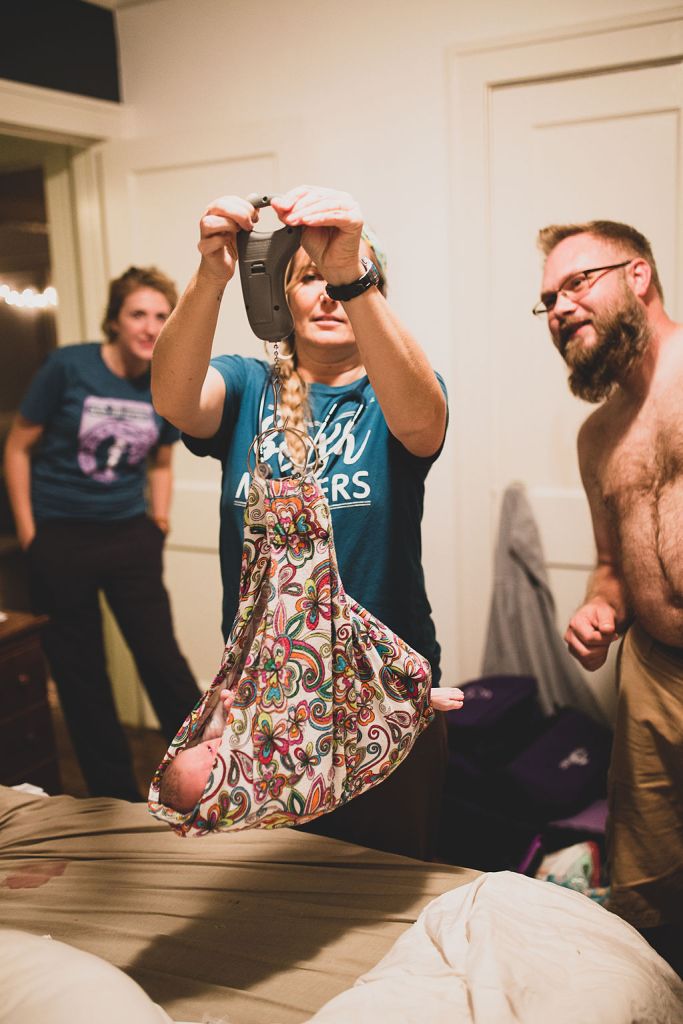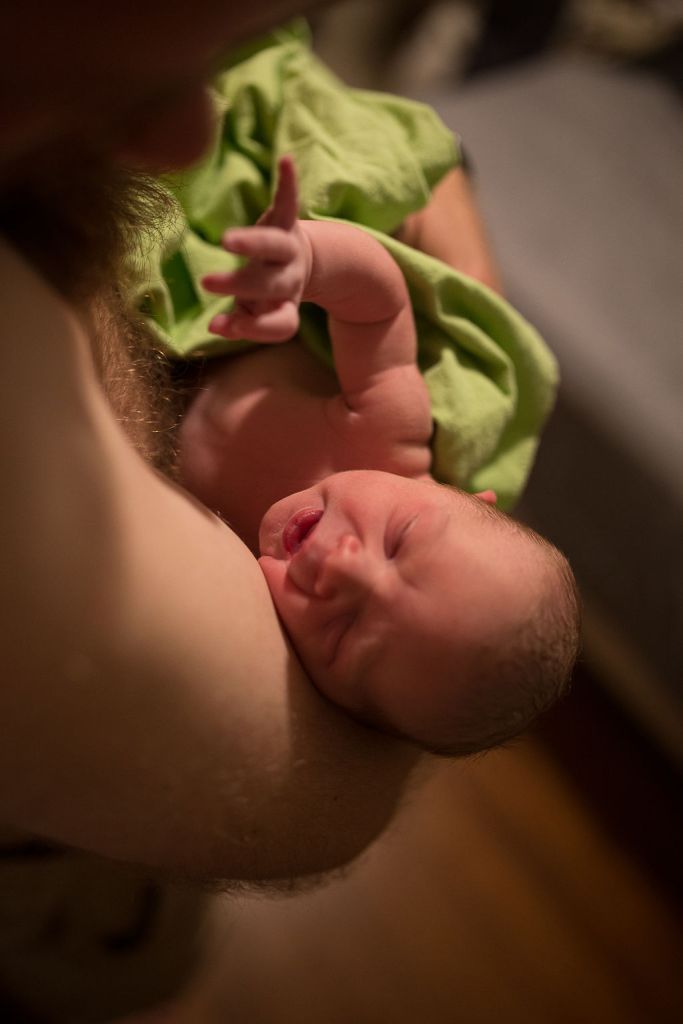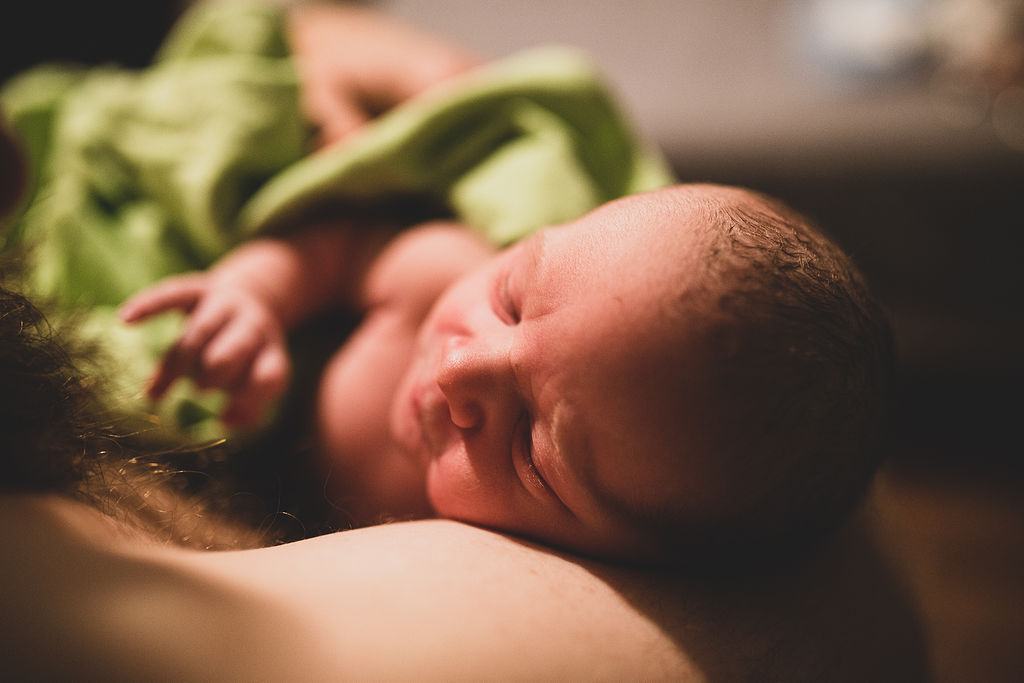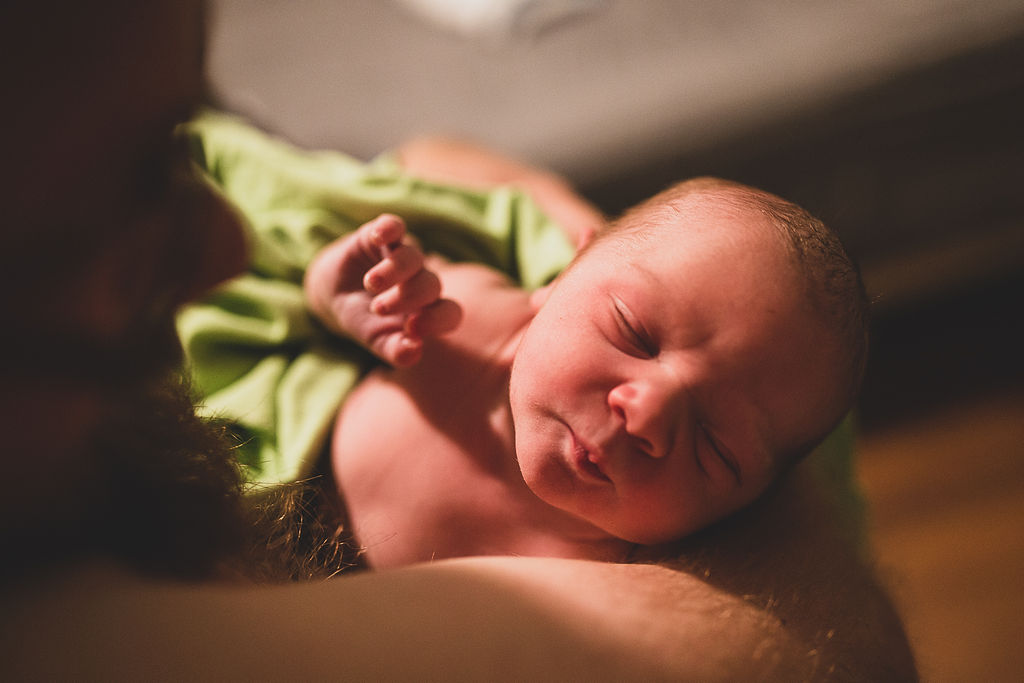Bethany Elise
Born Saturday, October 10
12:15 am
6 lbs. 15 oz.
19 inches long
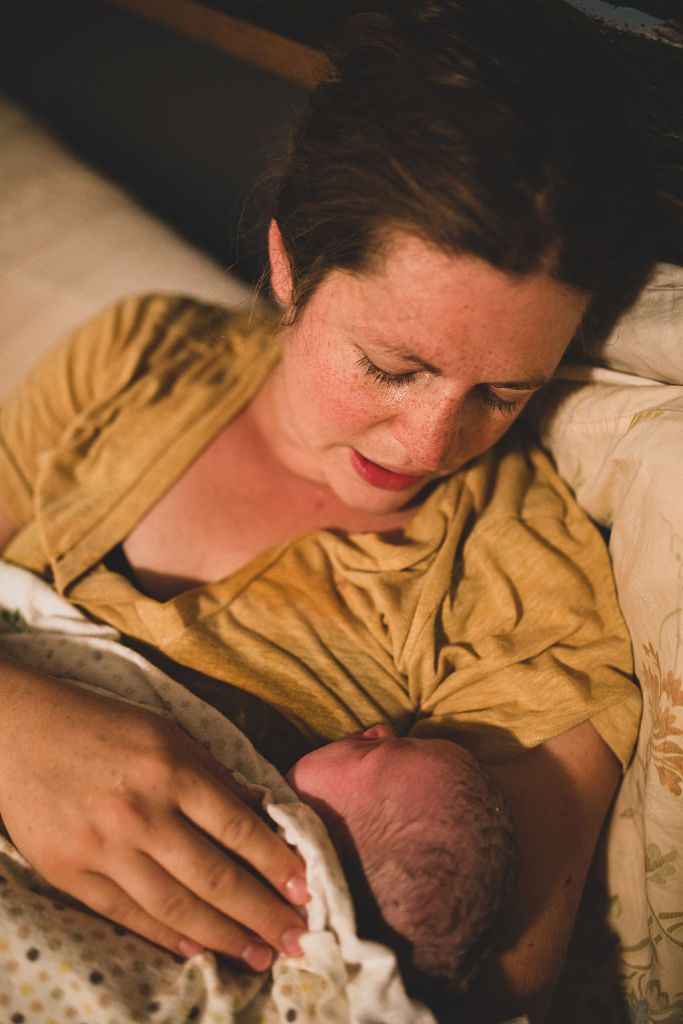
The Meaning Behind Her Name
I’ve always felt that names are important so we sat with several names for a long time before feeling that Bethany Elise was the right name for this little girl.
Bethany – means house of welcome, house of answering, or house of figs (figs traditionally symbolize security, well-being, prosperity, and peace; it also takes time to culture and nurture a fig tree, so their maturity indicates that the gardener has been steadfastly tending to their growth over the years, and in Genesis their leaves were used to cover up Adam and Eve’s shame). Outside of the meaning of the word Bethany, we loved the history behind it as a place name in the gospels. Bethany was the home of Mary, Martha, and Lazarus, good friends of Jesus. It was a place of friendship, a place of rest with friends. It was also a place of hospitality. But it was also a place of deep grief and vulnerability and of resurrection.
Elise – means God is my oath, my abundance and satisfaction. Another meaning is: consecrated to God.
The Birth Story
Head’s Up
Bethany’s birth story began a couple weeks before her actual birth, at our 37 week home visit. Up until that point, my pregnancy had been fairly smooth and uneventful, with no complications other than a brief scare with high blood pressure at my 36 week visit (after checking my blood and urine and monitoring my blood pressure for a couple days afterwards, we think it was related to the emotions of finally getting the benign results of my thyroid biopsy that same day). After four months of worrying that I might have thyroid cancer, I was relieved that I could finally spend those final weeks of pregnancy emotionally and physically preparing for Bethany’s birth and just resting.
So our 37 week home visit came and we spent a while chatting about the home birth we dreamed of, about who would be there and all of our hopes and preferences for the birth. At the end of the visit, we did the standard prenatal checks and after poking around on my belly for a while and listening for the heartbeat, the midwife, Jana, finally admitted that she could tell for sure that baby girl was head down. She thought she probably was, but there was a distinct lump near the top of my belly that could be her butt…or it could be her head.
What?
Up until that point, I had worried a little that she might end up posterior like Ethan (because I heard that the chance of having posterior babies in subsequent pregnancies are higher once you’ve had one, because some women’s backs and pelvises just encourage that position), but it had never occurred to me that she might not be head down. Jana told me not to worry about it yet and that we’d confirm her position with an ultrasound at my appointment with Debbie the following week.
But of course I DID worry and began poking my belly regularly and paying close attention to her movements, trying to guess at her position. What I felt was not reassuring. Because of my anterior placenta, any kicks I felt were pretty faint, but were definitely in the lower part of my belly. And eventually I could feel a very distinct hard ball at the top of my belly that felt much more like a head than a butt to me.
The following week I had a brief scare where I thought I may have been exposed to Covid at work, so instead of waiting until my appointment on Wednesday, one of my midwives, Sarah, stopped over with the portable ultrasound machine that Monday evening, just to double check her position and reassure me. Sarah explained that we were looking for a distinct “halo” that would indicate the head. And she quickly found it, sitting right there at the top of my belly, just like I was afraid it was.
Baby girl was definitely breech.
(In hindsight, I suspect that she had probably been breech for a while, maybe even since our 20 week ultrasound)
The External Version
There are a lot of things you can do to try to turn a breech baby (“spinning babies” exercises, acupuncture, chiropractic adjustments with a Webster trained chiropractor, frozen peas on top of your belly, handstands in the pool, and more) but at 38 weeks, we didn’t have much time and it’s much harder for babies to flip as they get bigger. And the team of midwives that I had been working with for my whole pregnancy (the same team that delivered Ethan five years ago) don’t do planned breech births. So they recommended a procedure – an external cephalic version (more commonly referred to as an ECV) – with a local OB to try to flip her. I had heard that the procedure is intense and that it typically only has about a 50% success rate, but Sarah told me that the doctor they recommend, Dr. Wayman, is the best in the area and that they had never had a version with her that didn’t work, so I felt hopeful. After all, if the procedure worked and she was able to turn baby girl head down, I could continue on with my home birth as planned.
And if not? I honestly tried not to think that far ahead yet.
So we scheduled the version for that Thursday. And in the meantime, I tried to squeeze in all sorts of things to try to flip her. I did forward inversions off the couch multiple times a day. I lay upside down on an ironing board for 20 minutes at a time (which was SO painful!) with peppermint oil on top of my belly. I sat with a bag of frozen peas on top of my belly and shined a flashlight on the bottom of my belly. I even squeezed in a last minute appointment with a Webster certified chiropractor the night before my ECV, in the hope that it would help loosen and align everything so she would turn easier.
And then that Thursday (October 1) Derek and I both took the day off and headed to the hospital first thing in the morning after dropping Ethan off at school. After some confusion about what part of the hospital we were supposed to be in, we were finally checked in and ushered into the room. I changed into a hospital gown, had an IV port inserted, and was hooked up to the monitor. The room filled with the steady swish swish swish of baby girl’s heartbeat and I practiced taking deep, relaxing breaths as we settled in to wait for the doctor.
They did an initial ultrasound before the doctor came in to confirm that baby was still breech (she was – not surprisingly). They thought it looked like she was complete breech, with her legs crossed down at the bottom of my belly (which made sense with the low kicks I had been feeling) and her hands nestled up by her face. After a long wait, Dr. Wayman finally arrived and did another ultrasound. She also felt the baby’s position and mobility with her hands. As she did, she commented that she didn’t see much fluid left and that baby girl seemed to be lodged pretty tightly in there. Both of those things, along with my anterior placenta, might make it trickier to turn her, but she would try.
And then she did. Three times. It was….uncomfortable, to say the least. But I did my best to relax and breathe through it, telling myself that it was worth it if she would turn.
But baby girl didn’t budge, not even a little.
And just like that, Dr. Wayman was done and apologizing that she wasn’t able to turn her.
Even worse, she expressed concern about my low amniotic fluid levels and said she wasn’t sure she could safely send me home that day. If they were too low, she might need to do a c-section that day. She tossed out 2:30 p.m. as a possibility. And all of a sudden I was trying to wrap my head around what just happened, about the possibility of abdominal surgery, about the possibility of having a baby THAT DAY, within hours, about not leaving that hospital again without a baby in my arms. It was shocking and overwhelming and I almost didn’t know what to ask. Ultimately, she explained that she would have them bring up a more detailed ultrasound machine to check the official fluid levels. If they looked okay on that ultrasound, she would go ahead and send me home and we would schedule the c-section for the following week instead.
So we spent the next several hours in the hospital, the constant swish swish swish of baby girl’s heartbeat our constant background still. While we waited, they tested me for Covid (just in case I needed to do the c-section that day) and gave me paperwork to sign. They eventually came in and did the more detailed ultrasound (the ultrasound tech though that baby girl looked frank breech this time, with her feet up by her head) and measured the fluid levels. I began googling c-sections and what to expect from recovery. And I talked with my midwife, Sarah, who gave me some practical questions to ask the doctor before we moved ahead (What are my exact fluid levels? What are the risks if we waited a few more days for the c-section? Etc.)
Ultimately, they determined that my fluid levels were at an 8, which is on the low end of normal, but not dangerously low. They said that it might mean that my body was just getting close to going to into labor and that I’d been having contractions every 5-7 minutes (I had no idea!). So they released me to go home, with instructions for what to do (come to the hospital) if I went into labor.
Choices (and a Lot of Googling)
I was relieved that we were free to go home that day. It meant I didn’t have to scramble to figure out someone to pick up Ethan. It gave me time to pack a hospital bag (and to even figure out what you’re supposed to pack in a hospital bag, because for a home birth, you don’t have to do that!). And it gave me at least a little bit of time to evaluate my options, now that I knew that she was breech and would likely stay breech at this point (though I’d read plenty of stories of babies turning last minute, even in labor, I suspected based on how tight she was in there and my low fluid levels, that this girl was comfortable and staying head up).
But now I had to consider my options. And the home birth I’d planned with Debbie and her team was officially not one of those options anymore. I cried a lot, both in the hospital and at home, as I grappled with the reality of that.
These days, the standard next step for a breech baby who won’t turn is a c-section (as I later learned in my research, for a lot of women, this is the ONLY next step available to them). In fact, in my consultation with Dr. Wayman before we scheduled the version, she had already thrown out some tentative dates for a scheduled c-section, explaining that she couldn’t schedule one before 39 weeks but that we would want to schedule it before I went into labor on my own so that I didn’t arrive at the hospital before surgery with her already partway out, which would make the surgery more complicated or maybe even impossible. To her credit, though, before she began talking about scheduling a c-section, Dr. Wayman asked me, “If this doesn’t work, what do you want to do?”
Honestly, though, I didn’t know what I wanted to do, or even what my options were. I had the vague idea that a vaginal breech birth was possible, but risky and difficult, and that it may be hard to find a provider who would even attempt it.
Dr. Wayman called me later in the afternoon after the version to follow up and I asked her what my options were if I wanted to attempt a vaginal breech birth. Although she does not do vaginal breech births, she was actually pretty encouraging and said that, on paper at least, I looked like an ideal candidate for a vaginal breech birth. I had already given birth before (to a posterior baby at that) so I had what they call a “proven pelvis.” My pregnancy had been healthy so far with no complications and baby girl appeared to be healthy and not too big or too small. And she was definitely butt down (not a “footling breech” with her feet engaged down in my pelvis) with her chin tucked, which is the “ideal” breech position. And I had a certain amount of confidence that I could do it, which is also a bench mark they look for. She referred me to a specialty clinic at KU medical center where there were a couple doctors who she thought might do vaginal breech births. And she mentioned a local home birth midwife, Amber Walla, whose name had come up in several local mom groups when I asked who in the area might consider a breech birth.
That evening I had a long conversation with one of my midwives, Sarah, who helped talk me through all the emotions of this turn of events and shared from her own experience about some of the realities of what I might expect if I went with a c-section. And later that night Debbie called me as well and we talked about the possibility of switching to Amber’s care. It turns out that Debbie and Amber are long-time friends as well as colleagues in the home birth community. Debbie encouraged me that working with Amber could be my best option for having a natural breech birth.
Feeling emotional and overwhelmed, and spurred by a sense of urgency to explore my options and make a decision fairly quickly in case I went into labor soon, I took the next day (Friday) off of work as well to sort through my feelings, do some research, and make some appointments.
I contacted the KU clinic to see if I could at least get a consultation to see what a breech birth might look like with them. They called me back shortly afterwards to say that they were no longer accepting breech births because of the risks, so that door was quickly closed. Honestly, though, it felt like a relief to take that option off the table. Though a hospital breech birth is considered “safer” because I could more quickly transfer to a c-section if something went wrong, I was concerned that a hospital setting would require more interventions, like an epidural (in case of an emergency c-section) and constant fetal monitoring, that would restrict my movements and possibly force me to deliver on my back, which would make it more difficult and painful to give birth to a breech baby (and could lead to more interventions, like an episiotomy). I had wondered if the difficulties of giving birth in that setting would be any better than the challenges of recovering from a planned c-section.
I also contacted Amber Walla and we set up a consultation with her that evening, when Derek could join us. We asked a lot of questions about her training and experience, about what we could expect from a breech birth, about possible complications and how she would address them, and what warning signs would cause her to transfer us to a hospital. She patiently talked us through all of our questions and encouraged us to take time to think and pray about it before making a decision.
Key Questions I Asked When Considering a Breech Birth:
In addition to those conversations with the doctors and midwives, I tried to do my own research. I tend to be an obsessive googler and that is even truer with a big decision like this. I want all the information. I want to know what to expect. I want to know worst case scenarios, even if those stress me out. I want to make informed decisions, especially when it comes to medical procedures. So I began searching Facebook groups for personal stories and experiences (both local mom groups and larger groups, like the Birth Without Fear group) and googling all the things. I read stories and statistics, researched risks and complications, and watched videos about the mechanics of breech births. In all that, there were a few key questions I was asking as I considered whether I wanted to try a vaginal breech birth:
What are the actual risks of a vaginal breech birth?
There are a lot of sources out there that share how much riskier breech birth is than a normal head down birth, but I wanted to know what those risks were, particularly in an environment where birth was allowed to progress naturally without interventions. The most helpful source I found was a small study from California that compared the outcomes of 50 planned home breech births with about 100 planned head down home births, all with the same provider. This study was helpful for me because it specifically looked at planned breech births (not surprise ones) with a provider who was knowledgeable and confident in breech deliveries, who allowed the mother to move and follow her instincts in labor and only intervened if needed. It gave me an idea of what real complications arose under those conditions, how many mothers were transferred to the hospital, and what the long-term outcomes for those infants were, etc. And ultimately, while there were some mothers who did have to transfer to the hospital for emergency c-sections and there were some complications, the long-term prognosis for even those infants remained positive. That was reassuring.
What if the head gets stuck?
This was the biggest risk I kept hearing about with a vaginal breech birth: that the butt/body could come too quickly and the head could get stuck. So that was one of my questions for Amber: what would she do if the head got stuck? (because at that point, time was an issue and I wouldn’t necessarily have time to transfer to the hospital for a c-section). She explained how important it was to let myself fully dilate before I start pushing but that a baby’s butt is almost the same diameter as the head, so typically if I’m fully dilated, the head can come out as needed. But she also explained some of the maneuvers she’s been trained in and could use if any part of the baby got stuck (legs, arms, head, etc.) That reassured me that she had the knowledge and calm to act quickly if that were to happen.
What if the cord prolapses and gets compressed?
I had heard anecdotal stories of moms who were so glad they went for a c-section because of how the cord was wrapped around the baby. I’d also heard that with footling breech babies (which she was not) there was increased risk of the cord coming out first because there’s more room and then there’s a danger of it getting compressed when the head comes out and cutting off oxygen to the baby. But Amber explained that cord prolapse is a risk with any birth and that it’s actually more likely to get compressed by the head coming out than a soft baby butt. But even so, she said they monitor the baby’s heart rate as she comes out and pay attention to the color of both the baby and the cord. They also keep track of the time from when the baby first begins to come out and if it looks like baby is in distress, she would intervene with maneuvers to help the baby come out quickly.
Am I more likely to tear with a breech baby?
I was worried that a breech birth would be “harder,” more intense on my body, and that it would be more likely that I would tear badly (and therefore have a harder recovery). I was especially afraid of this after hearing a friend’s story of her intense breech birth in the hospital where she received a significant episiotomy. But the actual incidences of tearing during planned home breech births in the California study was low and there were no major tears among second-time mothers. The risks of tearing seemed related directly to positioning and interventions (which were more likely in hospital births where the mother is restricted to the bed, forced to labor on her back, coached in pushing, etc.). As it turns out, I only had one tiny tear with this birth (that didn’t require stitches) and my recovery has been even less painful than my birth with Ethan.
Seeking Peace
Outside of all that research and knowledge, though, I was seeking a feeling of peace with whichever route we went. I felt that if I was going to choose to try for a vaginal breech birth, going against the “norm” in the medical community, I needed to feel calm and confident about it. And I didn’t. At least not at first. By the end of Friday, I felt anxious and unsettled about both my options (a vaginal breech birth at home with Amber or a scheduled c-section with Dr. Wayman).
So I went to bed and got a full night of sleep.
And in the morning (Saturday), I journaled my feelings and fears a little bit. And then I read some more breech birth stories. And somewhere in there, something settled and I felt that peace about trying for a vaginal breech birth. I think part of that came from a story I read from a mom who attempted a vaginal breech birth and ended up with a c-section when labor wasn’t progressing. I was reassured by her peace about both trying the vaginal birth and accepting the c-section when it became necessary. But I also think some of that sense of peace came from realizing, as I read all these stories of breech births, that having a breech birth wasn’t just possible, but that it could actually be a GOOD birth, a peaceful, natural home birth ending with us all cuddled up in bed as a family like I had imagined before.
So on Saturday morning (October 3) we texted Amber to let her know that we were in; we wanted to try for the vaginal breech birth at home. I knew there were risks and that we could very well end up in the hospital with a c-section anyway, but I felt peaceful about trying for it. And as soon as we made that decision, I felt so much calmer in general, because now I could prepare myself – physically and mentally – for the birth path that we had chosen.
And then I had to wait, because this plan didn’t have a convenient end date like the scheduled c-section would have. It required waiting patiently for labor to start on its own (though I knew Amber wouldn’t let me go past 42 weeks with a breech baby).
Birth Day:
On Friday (October 9) I worked my last day of work before maternity leave. It was a professional development day and we started the day with a little baby shower for me, which was sweet. Then I finished up some documentation and helped orient the substitute teacher to the classroom. It felt surreal to get off work that day, knowing that I was going to be off for the next twelve weeks, but at the same time I was sort of looking forward to the idea of having a little time off the following week to rest, mentally prepare, and maybe finish a few last minute projects before she arrived (ha!).
After work, I met up with Derek and Ethan at Loose Park for some family time. Then we came home for a simple dinner of breakfast for dinner and prepared for a family movie night (our Friday night tradition most weeks).
Around 7:00 p.m. that evening, as I cleaned up dinner and prepared for the movie, I noticed that I was feeling a little crampy, a distinctly different feeling than the Braxton Hicks I had been noticing all week.
By the 8:00 hour, as we sat watching the movie, I could identify distinct contractions, but they were only coming about every 6-7 minutes and lasting about 45 seconds long. They felt pretty mild to me so I didn’t want to assume it was the start of labor. Still, I left Derek and Ethan to finish the movie on their own and went to the kitchen to clean up and make the muffins I had planned to have on hand for birth snacks. I didn’t eat much during my labor with Ethan, so I wanted to be more prepared this time so I would have plenty of energy for another long labor (ha!). While the muffins baked, I folded a load of laundry and picked up Ethan’s train tracks to make sure there would be space for the birth tub, just in case.
When the movie finished, I casually mentioned to Derek that I was having some contractions before I heading in to help Ethan settle down for bed. Then (around 9:30 p.m.) I texted my midwife and doula to let them know that I was having mild but pretty regular contractions, just in case it turned into real labor that night.
After Ethan was asleep, I had Derek help me put the plastic sheet on the bed, just in case, and put up the white Christmas lights in the living room where I planned to labor (it’s the one room in the house that would fit the birth pool!). My plan was to get things organized and clean and then head to bed to rest, just in case labor really did kick in that night (ha!).
It’s kind of funny, because when I started mentally preparing for birth and imagining labor during that third trimester, I had imagined myself peacefully laboring alone during the early part of labor. I was actually sort of looking forward to it. I wanted to more intentionally prepare the birth space this time, so I imagined myself during early labor, putting up the lights, maybe lighting some candles and hanging some birth affirmations. I also imagined myself baking muffins and maybe cooking a batch of soup in early labor, so I could stay nourished during a longer labor. I sort of had a sense that I would feel relaxed and unhurried in early labor, content to prepare and labor alone as I anticipated the harder stage of labor to come. In a lot of ways, that was exactly my experience during this labor. I felt very relaxed and happy to work through the few tasks I had planned to do before I rested. I had just anticipated that early stage (and labor in general) being much, much longer than it actually was!
So around 10:30, with the muffins made, the house somewhat clean, and the bed ready, I tried to lay down to rest. But lying down immediately made the contractions more intense, so I got up and went to the bathroom. Sitting on the toilet also made the contractions more intense. So I ended up just sitting on the edge of the bed, swaying and breathing through each contraction. The contractions were coming about every 3.5-4.5 minutes by then and were about a minute long, but still felt really manageable as I breathed through them (I kept remembering a phrase I heard from a birth story somewhere, about “breathing the baby down,” so I kept thinking that as I breathed through the contractions).
Still, around 11:15 I texted my midwife and doula again to update them and let them know that I thought this was probably real labor, or at least the start of it. My midwife asked for details about my contractions and told me to let her know when I was ready for company. I assured her that they were feeling manageable but that I’d be in touch.
After a little bit, I decided that I should really try to rest a little, since I probably had a long night of labor ahead of me (ha!) so I lay down again. After two strong contractions lying down, I felt a very distinct “pop” and a gush of liquid. There was no question of what just happened. I told Derek (who was in the back room, adding some final songs to our birth playlist), then immediately texted my midwife and doula that my water broke and my midwife replied that she was on her way. This was 11:45 p.m.
Almost immediately after my water broke, my contractions intensified dramatically and I distinctly felt like my body wanted to push. With Ethan, I pushed for 2 ½ hours but I feel like I never felt that irresistible urge to push so this was a new feeling for me! The midwife texted that she was about 15 minutes away and asked if the liquid that came out was clear. I sent a sort of fragmented text back about not having a chance to check and “intense” as another contraction gripped me. She assured me that she was hurrying and it was probably best if I stayed lying down. I took off my wet shorts and underwear and ended up switching to my hands and knees on the bed with my head down on the pregnancy pillow I had been resting with and my bottom up in the air. That felt more comfortable than lying down at least. In that position, I tried to breathe through the contractions while trying to resist the urge to push, but it felt like my body was ready to do it, with or without me.
Eventually one of the assistant midwives, Gloria, arrived and started getting set up while I kept contracting. She gently encouraged me to just listen to my body, which really wanted to push. So I let it push, but still didn’t intentionally push with the contractions.
And then finally, I surrendered to the urge to push and pushed with a contraction. I pushed through the burning sensation and felt her body and legs and then head slip out. Basically, with that one strong push, she was out! And wailing right away!
It was 12:15 am on 10-10-20 (just 30 minutes after my water broke).
They passed her between my legs and into my arms and I lifted her wet body up to my chest, shocked that she was out already (I think I literally asked, “Is she actually out? Is that it?”) It was so quick and so….easy? After all my worries about how hard it might be and everything that might go wrong, she basically just slipped out. I got to see a video later and it was a textbook hands-off breech birth: bottom first, legs released, then torso and arms, and then her head, all sliding out easily with no complications!
And then we snuggled together in the bed. She latched on fairly quickly and began to nurse and kept nursing for a long time. We waited for more than an hour for the placenta, but finally delivered that as well. And we all laughed about how quickly the birth happened, about how Amber barely made it in time and parked in the front yard, leaving half of her supplies on the lawn as she rushed in to make sure she didn’t miss it (I hear that she arrived just 8 minutes before Bethany came out!).
Ethan, who thankfully slept through the birth, woke up shortly after she was born and yelled out his bedroom door at us to all be quiet! He went back to sleep, but shortly afterwards he got up for real and came to meet Bethany. Eventually we cut the cord and weighed and measured Bethany (6 lbs 15 oz and 19 inches long). Later, Ethan watched curiously as they examined the placenta (he told me later that he was disappointed that he didn’t get to Bethany come out).
And then eventually it was just the four of us, snuggled up together in the bed as a family, marveling at this little girl and resting together (the kind of moment that would never have been possible with a c-section in the hospital).
(When we were talking about how hard it is for providers to get experience with breech births, because they are so rare now, Rebekah with Inspirational Births generously offered to photograph and film the birth so we could share it as an educational tool….except Bethany arrived too quickly, before Rebekah could get there! She still captured some sweet photos for us afterwards, though, as we cuddled together as a fresh family of four, and I am so grateful for these! And someone there did catch a phone video of her actual birth, which was so cool to see afterwards!)
Trusting in an Unpredictable Process
Partway through the third trimester, I began re-reading Ina May Gaskin’s “Guide to Childbirth” and one of the biggest things it instilled in me was a sense that I could trust my body to give birth to this baby. I couldn’t predict the process of birth, because each birth is unique, but I could relax and trust the process. And I could trust my team of midwives and doula to support and encourage that natural process (which feels like a key difference between the midwifery model of care and the more medical model of care in a hospital). That patient trust in an unpredictable process is a big thing for a type A planner like me who likes to know exactly what to expect, but I felt remarkably peaceful about it.
So then when we discovered that Bethany was breech, it felt really disorienting after such a strong confidence in my body’s ability to give birth. I felt like all of a sudden, I couldn’t trust my body and that I was being asked to give up on that process entirely to pursue a planned c-section. As I grieved over that possibility (I was surprised by the intensity of that grief), I had to remind myself that while I do believe that generally we can trust our bodies in this process of birth, ultimately my trust isn’t in my body but in God and his story for me, for Bethany, and for her unique birth story, regardless of whether that story took place at home or ended up including a hospital birth.
Ultimately, choosing to attempt a vaginal breech birth at home was a chance to follow that invitation to trust my body and the natural process of birth. But attempting a vaginal breech birth at home (or any home birth, really) has its risks and I feel like it was necessary for me to surrender to that process and acknowledge that so many aspects of it were unpredictable and out of my control, to trust that our story would be good no matter what complications might arise or how far we might deviate from my original birth plan. And as I reflect on the quick, smooth labor I experienced, where she literally just slipped out, I am glad that I chose to trust that process.

